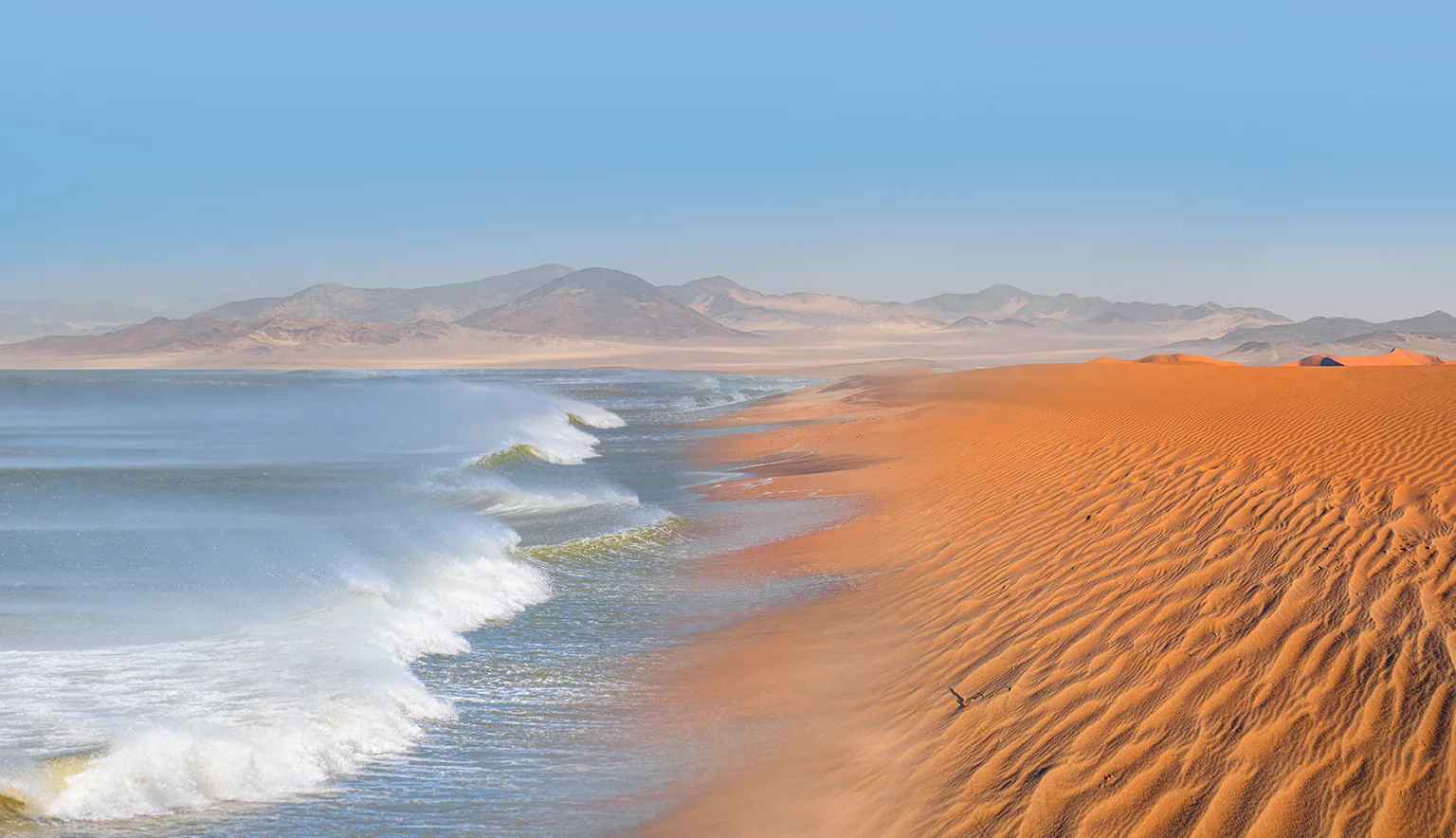Widely considered the oldest desert on Earth and one of the largest in Africa, the Namib Sand Sea has an astonishing history of aridity that extends back between 55 and 80 million years. Stretching hundreds of miles along the Atlantic Ocean, the otherworldly desert emerges like a surreal oasis of towering sand dunes and ever-shifting shadows that cast vivid colours as the sun travels across the sky.
The red-hued wonderland is both an incredible example of the evolution of a one-of-a-kind desert landscape and a sanctuary for wildlife that have uniquely adapted to the extensive environment.
Part of the reason the Namib Sand Sea is so exceptionally beautiful and distinctive is its status as an active geological-geomorphological phenomenon. This is due, in part, to fog being the primary source of water across the three million hectares of desert. Various species have learned to thrive in the hostile environment by taking advantage of the fog-bathed coastal dunes and developing ways to trap the atmospheric water that blankets the landscape. The endemic plants and animals residing within the sands are a globally important example of evolution and the ability of life to prosper in extreme environments.
The desert was declared a UNESCO World Heritage Site in 2013 and is a haven for adventure-seekers and nature-lovers alike who are looking for a truly inspiring and unparalleled experience in the heart of the country’s natural wilderness.































